




- BRNN
- BRI News
- BRNN News
- Database
Official Documents Polices and Regulations
Inter-government Documents International Cooperation BRI Countries
Business Guide Economic Data BRI Data
Trade
Investment Projects Latest projects
Cases - Content Pool
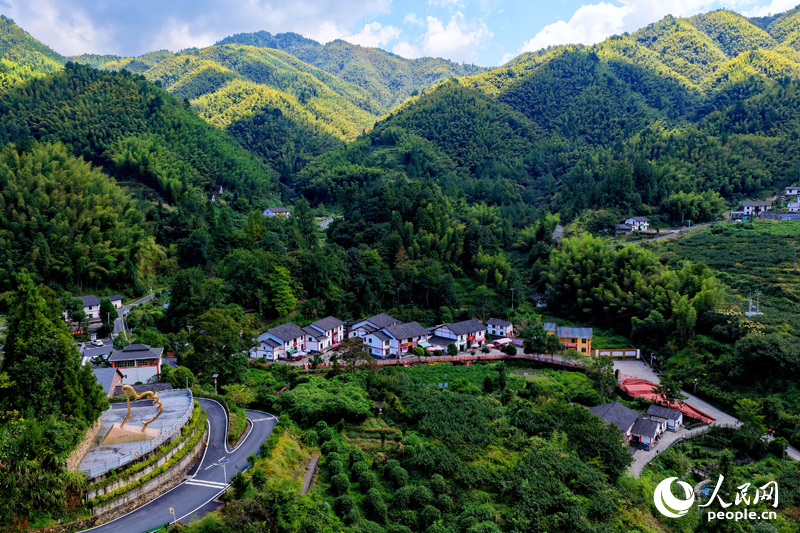
Photo shows an aerial view of Shenshan village in Maoping township, Jinggangshan city, east China's Jiangxi Province, where blue skies, green forests, beautiful farmhouses and smooth roads form a picturesque landscape. (People's Daily Online/Zhu Haipeng)
Shenshan village, a mountain village in Maoping township, Jinggangshan city, east China's Jiangxi Province, is witnessing a boom in new businesses as it experiences a rebirth driven by thriving homestays, agritainment restaurants, and specialty agricultural industries.
"The air is fresh and the weather's cool, which makes it the perfect escape from the city," said a tourist surnamed Yin, while checking out after a weeklong stay—his second visit in two months.
"The houses look rustic from the outside, but they have everything you need inside. You can even walk to a coffee shop or a reading room in just a few minutes," he added.
"The most popular places in our village now are these homestays," said Lai Guohong, a member of the Communist Party of China (CPC) Shenshan village branch.
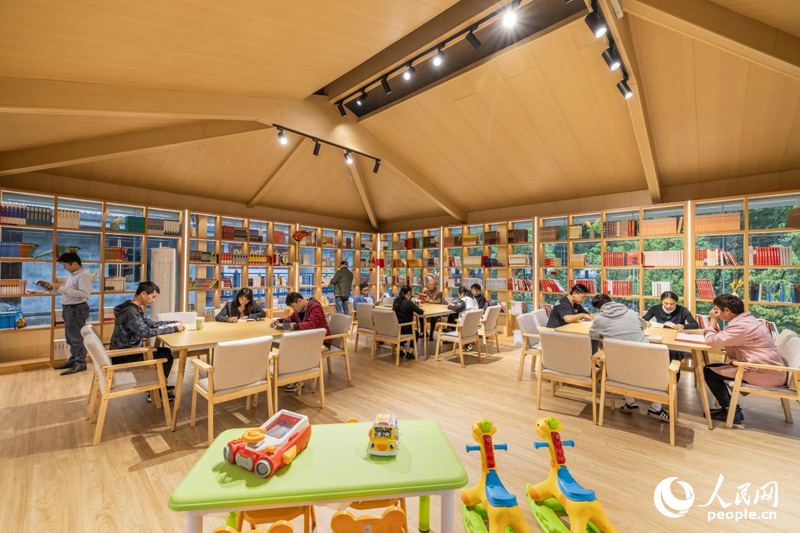
Visitors browse books and enjoy a quiet moment inside a revolutionary culture-themed reading room in Shenshan village, Jinggangshan city, east China's Jiangxi Province. (Photo courtesy of the interviewee)
"These homestays were all old homes, restored to keep the village's traditional look while meeting modern standards," Lai told People's Daily Online, pointing to several renovated houses—white walls, gray tiles, wooden beams gleaming under the sunlight.
Inside, the rooms are cozy and refined, with wooden furniture paired with floral fabrics, handmade crafts hanging on the walls, air-conditioning, hot water, and Wi-Fi all in place.
Just a year ago, this quiet hamlet looked nothing like this.
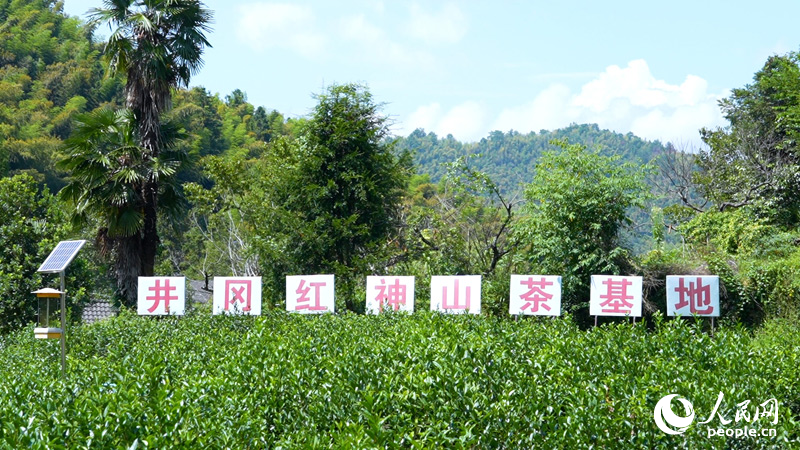
Photo shows a tea plantation in Shenshan village, Jinggangshan city, east China's Jiangxi Province. (People's Daily Online/Kong Wenjin)
According to Lai, Shenshan's village committee has organized training trips, helping locals learn from successful rural tourism models in other regions.
"Two families were the first to try modernizing their homestays. They started small but made real profits," Lai said. "That inspired more villagers to return and follow suit."
One of them is Huang Jinlong, who used to work elsewhere in transport. "This summer alone, his homestay made over 100,000 yuan ($14,045) within two months," Lai noted proudly.
In an effort to help villagers who lack the time or skills to operate a homestay to benefit from the burgeoning business, Shenshan village introduced a cooperation model, enabling villagers to entrust homestay operations to tourism enterprises.
"Right now, we manage four homestays with 26 rooms. During the summer vacation, they are almost always fully booked," said Zhang Ying, head of operations at a local branch of Ji'an Cultural and Tourism Group.
Besides the booming homestay business, agritainment restaurants offering food made from freshly sourced local ingredients have also enjoyed rapid growth in recent years.
One of the restaurants, Shenshan Nongzhuang, has been operating successfully for years.
"We can serve up to 100 guests at a time," said the owner Luo Lin'gen. "During peak season, we've hosted 300 guests during one meal service. The kitchen never stopped."
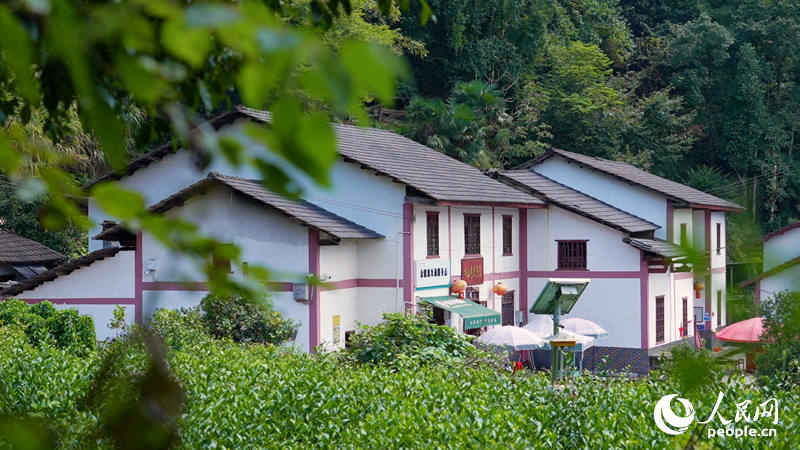
Photo shows a restaurant converted from old houses in Shenshan village, Jinggangshan city, east China's Jiangxi Province. (People's Daily Online/Kong Wenjin)
Eight years ago, Luo and his younger brother returned to their hometown with just 7,000 yuan in savings, converting their old house into the restaurant and a specialty store next door.
The specialty store, run by the younger brother Luo Linhui, sells handcrafted combs, bamboo baskets, and dried fruit—souvenirs that blend local craftsmanship with modern design.
"Our store has expanded from 40 to 100 square meters," said Luo Linghui. "During peak season, the store brings in over 10,000 yuan a day in sales."
Beyond tourism-related businesses, many villagers have found steady incomes in local specialty agricultural industries such as tea, bamboo, and fruit farming.
Under a development model featuring close collaboration among professional cooperatives, production bases and farmer households, Shenshan village has pooled land to create a 460-mu (about 30.67 hectares) yellow peach plantation, a 200-mu tea plantation, and Moso bamboo forests covering an area of 4,900 mu, bringing scattered growers together along industrial chains to share in the benefits of development.
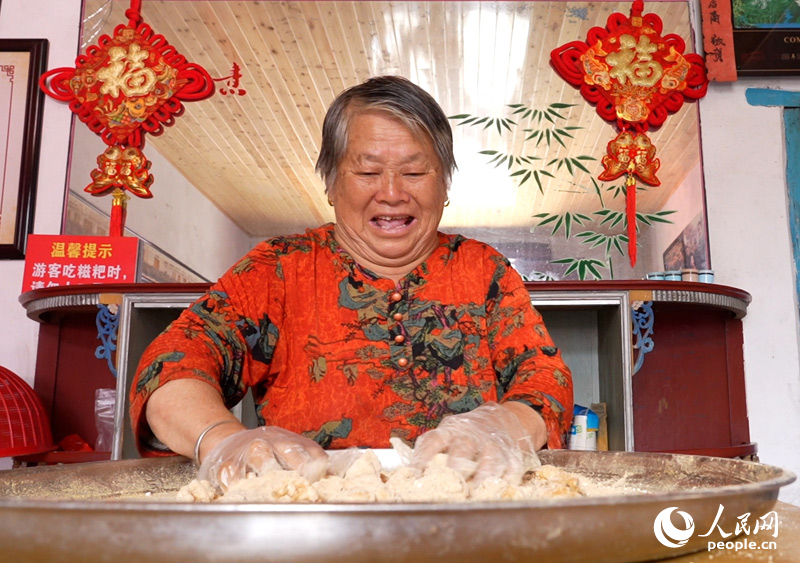
A villager makes traditional Ciba, or glutinous rice cake, in Shenshan village, Jinggangshan city, east China's Jiangxi Province. (People's Daily Online/Kong Wenjin)
"We have enjoyed strong support from the municipal and township authorities, receiving seedlings and technical training," Lai said, noting that each household now earns 30,000 yuan to 50,000 yuan more per year.
The village's efforts have yielded rich fruits, increasing its average annual income per person from just 3,000 yuan in 2015 to 32,000 yuan in 2024. Meanwhile, the collective income of the village has surpassed 1 million yuan.
Since the beginning of this year, the village has received more than 200,000 visits, according to Lai.
The village holds free training sessions every year—covering homestay management, catering services, and new media marketing—in a bid to keep improving villagers' capabilities for sustainable development of their businesses, Lai noted.
"Next, we'll promote further integration of leisure tourism, study tours, green farming, and rural experiences, so that villagers will live a better life and our village will grow livelier," Lai said.

Tel:86-10-65363107, 86-10-65368220, 86-10-65363106